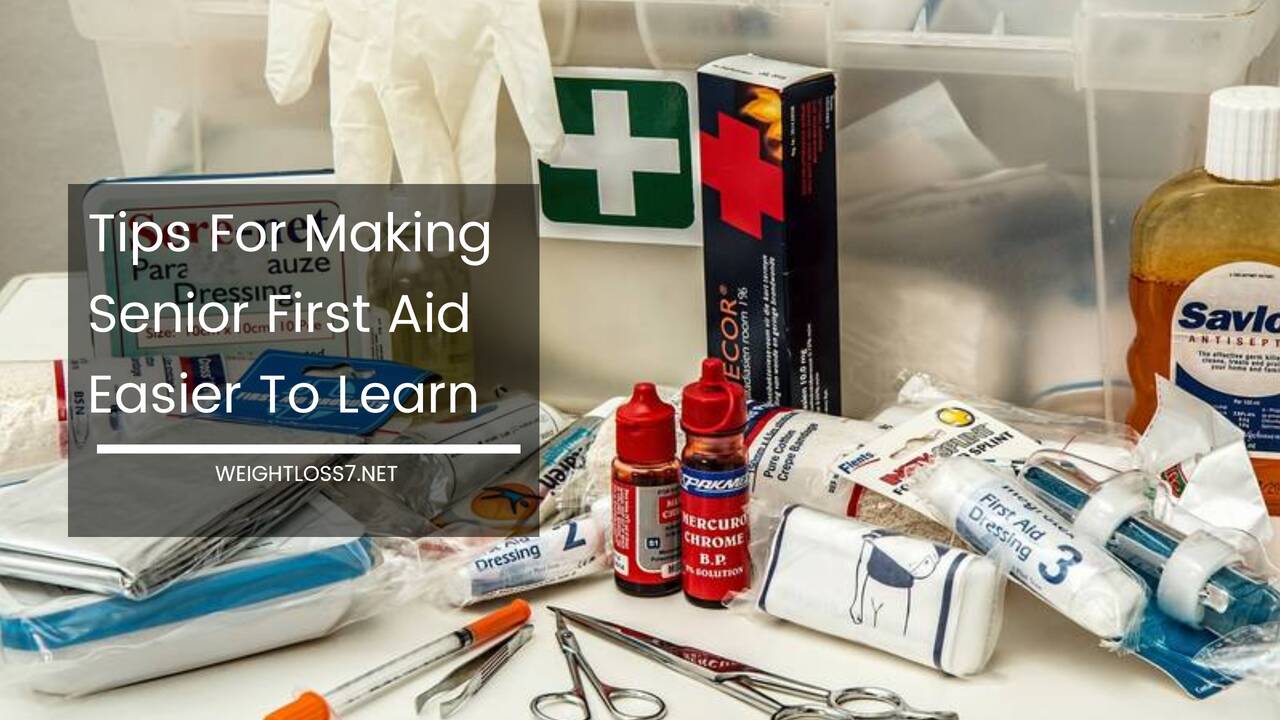Tips For Making Senior First Aid Easier To Learn

Many trainers believe that it’s near impossible to teach a senior first aid. This is because unlike young people seniors find it difficult hearing the heartbeat, feeling for a pulse or even putting enough pressure into chest compressions.
However, the problem with the majority of trainers is that their programs are fashioned with young and healthy people in mind. In order to train seniors in first aid you first need to design a program that takes their abilities and disabilities into consideration.
Seniors are not always sick, deaf and blind, there are perfectly fit seniors but they learn differently. In this article we will look at a few tips on how to teach seniors first aid in an effective manner.
Tip no. 1: Make a list of the absolute basics of each technique
The best way to start seniors off on a first aid course is to present them with a list of techniques you’re about to teach them. There should be a brief description of each technique below the name and what it is used for.
Right next to that should be a diagram showing the technique in action. Make sure that the print is large enough for them to read and the list should be presented a day before the course.
The fair majority of seniors love reading because that was the only form of non-physical entertainment when they were young. This is also the most effective way to teach them.
Tip no. 2: Ask them to demonstrate what they understand
Once your presentation is over its time to ask the seniors to show you what they understand. This can be a fun segment of the first aid course. Ask one to volunteer as the victim and others can try and show what they have learnt so far.
Studies have shown that seniors learn a lot better from trial and error as opposed to showing them exactly what needs to be done. When they are demoing what they understand you can make quick corrections and that is something they will remember.
Tip no. 3: Use stools, beds and pillows
The majority of people over the age of sixty will have a problem bending. This means that they will have to be taught CPR, chest compressions and other first aid techniques on an elevated surface. Seniors that can bend should be taught how to perform the technique while sitting on a pillow.
Senior first aid should also include tips on how to raise a fainting or unconscious senior on to an elevated surface like a bed or table.
Tip no. 4: Start with a quiz of the list you presented
Seniors don’t always have bad memory and like everyone else they want to be challenged. Before you start your initial senior first aid training class ask everyone if they read the list you gave them a day or two before.
Then ask them specific questions pertaining to the material you presented. This will give you a good idea as to what type of knowledge they have and what you need to work on.
In most cases seniors will also have a bunch of questions for you too, which you need to go about answering in order to clarify anything they might be pre-occupied thinking about.
Tip no. 5: Team work
Seniors will always need to work as a team in order to provide effective first aid. For instance, one can perform chest compressions while the other delivers life breaths. This will have to be rehearsed multiple times but before that seniors will have to be broken into teams.
For instance, husband and wife can be one team, two brothers can be a team, two friends can form a team etc. When you put together a team they can also practice on each other which is what makes it fun and easier to learn.
Tip no. 6: Stretch the course over a period of a week
Young people have no problem learning basic first aid in a day but this is not the case with seniors. Health Corp recommends that trainers should beak the basic course into six or seven easy to digest segments that are taught at the rate of one every day. This makes it easier for seniors to grasp new ideas and methods.

















